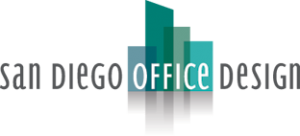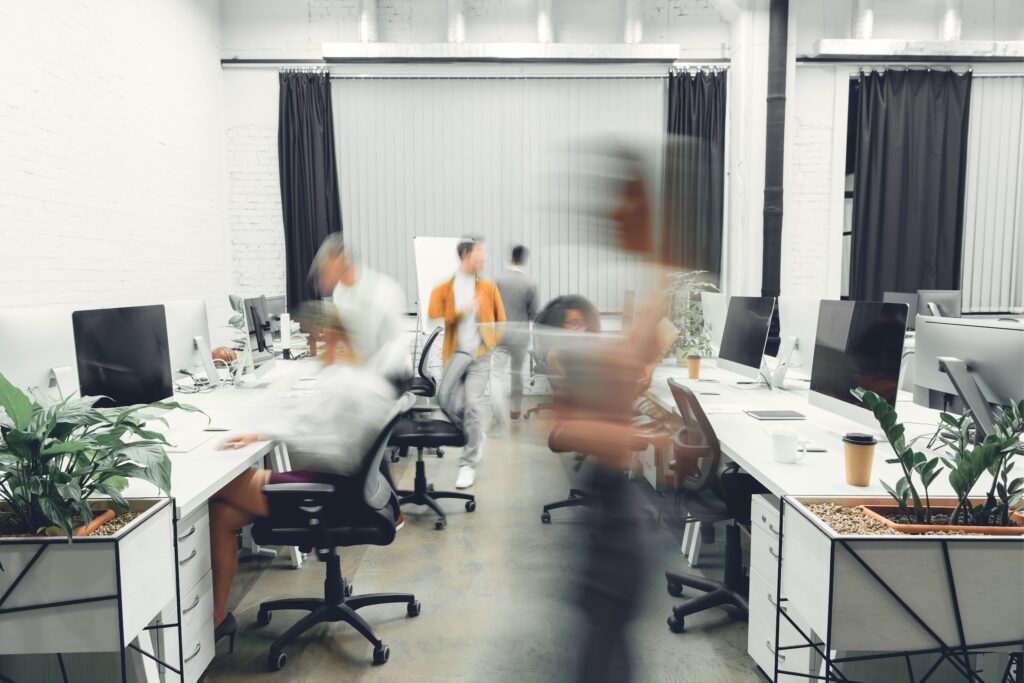Today’s workplace is driven by a new generation of workers who require their office space to be as versatile as their work lives. Millennials are expected to comprise more than half of the global workforce by 2023, and their approach to work differs greatly from that of earlier generations. Thus, employee retention is a major concern for corporate executives, HR managers, and team managers alike. How do businesses acquire and keep employees when 38% of people say they want to resign within the next six to twelve months?
The easy answer is to create a workplace in which they love to be. The traditional office has subdued color palettes, separate workstations built for minimum interaction, and limited collaboration and wellness facilities. Research has proven that the physical office design has a powerful effect on staff productivity and performance.
Why is workplace design important?
Research looking at the environmental aspects of the workplace that influence employee job performance discovered that office design features actually have a direct impact on employee well-being and productivity. For example, 26% of employees feel that being undervalued and underappreciated is the highest barrier to engagement. From the layout and design of the office to the temperature, color and noise, customizing your office’s design to best suit your employees and their working style can help you to dramatically increase employee retention.
- Loyalty is fostered through office design.
Employees who have a real connection to their team and company are MUCH more likely to stay, especially when things get difficult or issues arise. Employers that arrange their workplace to be “employee friendly” are making an investment in their team that goes a long way towards developing loyalty. Employees have proven to be even more engaged when they’re allowed to contribute to the workplace design process.
- Optimal office layout encourages productivity.
Employees who are forced to meet in awkward or unpleasant areas – such as the lunchroom, lobby, or even parking lot – are always less efficient than those who have designated, ideal spaces in which they can interact and collaborate with one another. The same is true for personnel who must consult with individuals and teams that are not located nearby on a frequent basis. Office design goes a long way towards supporting – or obstructing – efficiency, ultimately impacting employee productivity, performance, and happiness.
- The Office Design Promotes Wellness and Health
An office design that emphasizes natural light (while not requiring employees to wear suntan lotion and sunglasses!) may serve to enhance employees’ health and wellbeing, which are crucial for not only retention but also minimizing absenteeism and sick leave. Similarly, a workplace design that optimizes energy consumption (so that certain portions of the office aren’t boiling while others are freezing) accomplishes these critical aims.
- Employee expectations have shifted as a result of flexible work and agile organizations.
Whether we like it or not, we live in a new day and age. 71% of employees expect their workplace to be flexible in design, and many are interested in workstyles that provide them with the option to reserve an individual workstation, conference room, or communal area. Investing in systems that enable smart room and desk reservation serves to benefit the employee experience in the hybrid workplace.
- Turnover rates remain high, and companies must differentiate themselves from competition.
According to the Bureau of Labor Statistics, the turnover rate in the United States reached a recent high of 57% in 2021. Hiring is an expensive and time-consuming process, and happy employees breed more happy employees. Remember that, over the last two years, all employees’ expectations have changed, not simply those of new recruits. It is just as vital to evaluate how current employees feel and how they use spaces in order to optimize the work environment for hiring purposes.
- A positive workplace layout leads to improved retention.
What makes a workplace or work environment successful? The amount of time spent at the office is a good predictor. Another outstanding example of how the workplace affects employee performance is output. Analyze which office spaces are the most utilized in businesses with various locations, and then investigate why. Utilize a mix of office space surveys, workplace data, and workplace design experts to identify possibilities for efficiency and improvement.
- Office design and facilities have an impact on corporate culture.
Is your workplace a place where people feel at ease? Is there a place for every employee to feel welcome and be able to fully contribute to your organization? According to 2018 research, 35% of workers would reject a job offer if the work environment and business culture did not suit their preferences.
For example, are your meeting spaces set up for basic room reservations and hybrid meetings? If not, your in-office employees may prefer in-person cooperation as compared to collaborating with team members remotely due to the difficulties of scheduling a video conference in the office.
Creating an inclusive workplace design and facilities serves to strategically stimulate office spaces, which enhances overall employee happiness and job satisfaction, and this has an immediate influence on productivity and innovation. Individuals are simply more likely to focus on their jobs and personal improvement when they are set up for success.
Office Employee Expectations for 2022-2023
Employee expectations for the workplace in 2022 are focused on agility, employee well-being, and smart office capabilities. Employees anticipate flexibility and safety when they walk into the workplace since 74% of organizations use a hybrid work paradigm. In addition, employees will most likely expect to have access to the following amenities in the workplace as a matter of course:
- Reservations for desks
- Meeting spaces on reserve
- Spaces for collaboration
- Workstations for individuals
- Areas for relaxation & collaboration
- Options for healthy dining
In summary, business owners should seriously prioritize catering their office environment to the modern-day demands of the workforce in order to not only retain their current staff but also boost employee productivity and incentivize new staff to join the team.
Tamara Romeo, “The Design Boss” at San Diego Office Design, is well known as a workplace design expert who utilizes her talented team of interior designers to plan, design, furnish, and maximize workspaces across the U.S.A.

